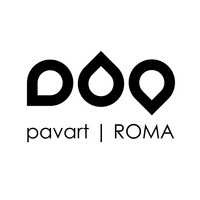TRIMANI O TENEVAI
“Trimani o Tenevai” is the first stop of a journey through the artistic evolution of Giovanni Trimani, a journey to discover his many facets. Giovanni Trimani’s works filter the influences of past masters, modulated in a totally personal and contemporary key. Among the various works by Trimani we can find Picasso, Maccari, Manzù, the fauve colors and the emotional strength of German expressionism. He is an artist who starts from the experiences of his life, elaborating them and proposing his emotions in a key that is as universal as possible, so that it can be shared by anyone. And here is the strength of an artist: being able to reach the heart of the user, being able to narrate the user’s emotions through its own. In this exhibition we will have the opportunity to admire some works from the 1990s which are totally destabilizing however conceal the path that he will carry out in future years. The two works are Amica and Ballo, both from 1999, two acrylics on wood that arise anxieties, reflections, strong and contrasting emotions, heritage of the rawness and immediacy of German expressionism that lead us back to the more intimate and less phenomenal character of the avant-garde of the early twentieth century. The “death” seen as a dear friend, and an almost ancestral and primitive “dance” that awakens and destabilizes the depths of human interiority. Ever since his first works, Giovanni Trimani has placed sign and colors at the center of his artistic research, elements that derive from a dispassionate love for expressionist art, but also by the appeal of stained glass art. This deep bond with Gothic stained glasses has personal roots. In fact, ever since he was a child, when he went to the family tomb at the Verano cemetery, he watched in enchantment a stained glass window that lit up thanks to sunlight. And that otherwordly vision accompanied him in his artistic career. Like the stained glass windows, also Giovanni Trimani’s artworks recall the mosaics of small pieces of pure color, connected not by lead bindings, but by a black mark that has the task of highlighting the modeling, as it happened in the Middle Ages. The acid and strident color that we had caught in nuce, in his early works, we rediscover it in all the following art production: from the Giullari, to the Nomadi, up to the works belonging to the Assedia project. This last project was born from a series of lucky coincidences perhaps considered as fate. Two people reflecting on the same subject at the same time. Giovanni Trimani writes a new poem in 2016; Francesca Bogliolo, Italian art historian, rereads a poem written by the artist the year before. Both decide to organize a personal exhibition on the theme of the chair in February 2017 and so it was. The chair is the subject he most represented in recent years. The chair conceived not as a still life, but as a series of portraits that describes the human universe. In fact, each chair is different from the other, through colors or shapes. Each chair tells a story!

